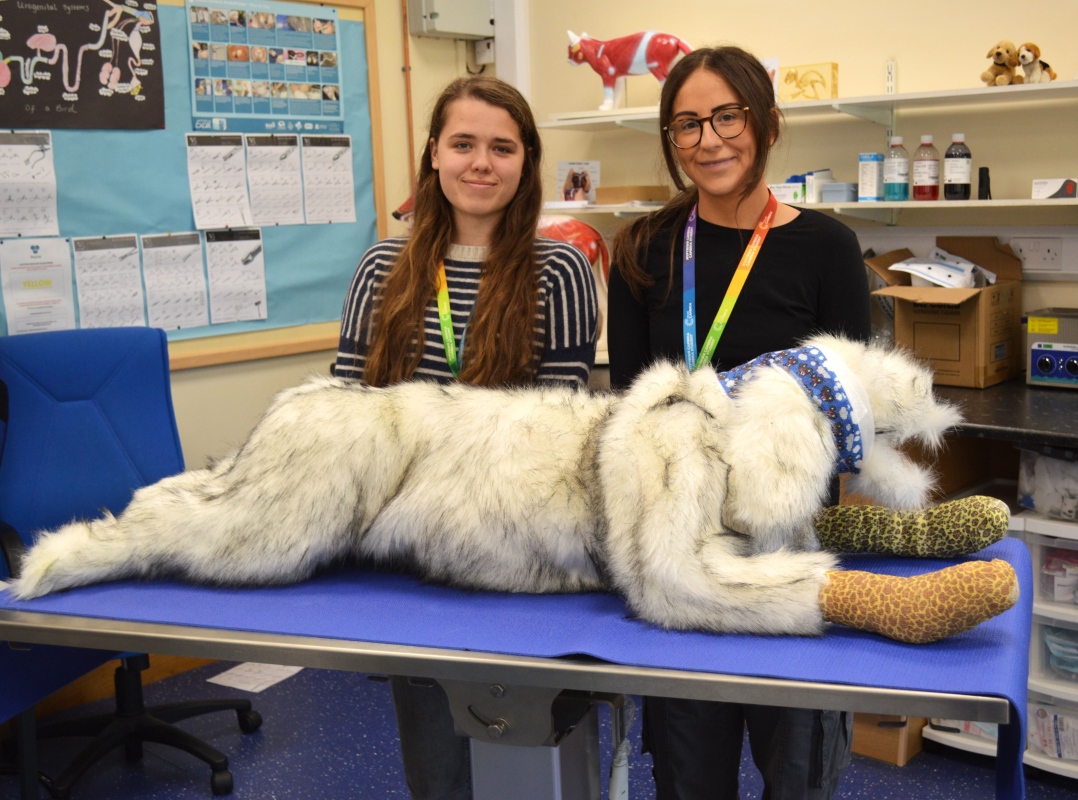Dog groomer

KSBs
Knowledge
K1: The 5 welfare needs of animals: a. its need for a suitable environment b. its need for a suitable diet (and water) c. its need to exhibit normal behaviour patterns d. any need to be housed with, or apart from, other animals in appropriate social groupings e. its need to be protected from fear, pain, suffering, injury and disease Back to Duty
K2: The legal responsibilities a dog groomer has for the welfare, handling, and management of dogs, for example under the Veterinary Surgeons Act and the Dangerous Dogs Act Back to Duty
K3: The responsibilities a dog groomer has in relation to health and safety at work under regulations such as the Control of Substances Hazardous to Health (COSHH), Manual Handling Operations Regulations, RIDDOR and the Health and Safety at Work Act Back to Duty
K4: Dog anatomy and physiology including variations within breeds, coat types, skull shapes and anatomical extremes Back to Duty
K5: Signs of good and poor health including those related to skin and coat conditions, parasites, disorders and zoonotic and non-zoonotic diseases and infections, and when abnormal health may require veterinary attention Back to Duty
K6: Behavioural change indicators, including signs of relaxation, fear, aggression and stress in dogs Back to Duty
K7: Requirements for planning a groom and factors that would influence any modifications Back to Duty
K8: Dog handling and manipulation techniques, equipment, and grooming processes relevant to the dog’s temperament, life-stage, lifestyle, breed and age Back to Duty
K9: Dog grooming equipment and it’s use according to breed, coat type, age and anatomical features including brachycephalic Back to Duty
K10: Circumstances that could lead to a groom termination for example dog illness, dog behaviour, zoonotic infections and actions that should be taken Back to Duty
K11: Bathing routine including setting correct water temperatures, safe lifting, application and rinsing of grooming products Back to Duty
K12: Dog bathing and drying equipment and it’s use according to breed, coat type, age and anatomical features of the dog including brachycephalic Back to Duty
K13: Dog grooming products, including medicated products, their use, storage, and dilution rates Back to Duty
K14: Use of cleaning, disinfecting and sterilising products within the workspace and disposal of waste Back to Duty
K15: Coat trimming techniques, and the reasons for trimming or not trimming certain areas Back to Duty
K16: Nail formation and growth, nail trimming techniques, and actions to be taken if bleeding occurs Back to Duty
K17: Principles of holding and working areas and environmental requirements according to breed, size and age Back to Duty
K18: Principles of equipment storage and routine maintenance including reporting of equipment maintenance requirements Back to Duty
K19: Variety of workplaces and workplace structures within which dog groomers operate, and the range of stakeholders they may interact with Back to Duty
K20: Canine first aid Back to Duty
K21: Principles for sharing technical knowledge with peers such as newly appointed colleagues and volunteers Back to Duty
K22: Communication techniques and how to adapt these for different audiences including delivering difficult customer conversations and dealing with customer complaints Back to Duty
K23: The importance of gathering and reporting accurate and complete information relating to all aspects of the groom, including the health and temperament of the dog Back to Duty
K24: Methods for collecting, recording and relaying relevant information to others Back to Duty
K25: Payment processes for example cash, card, and electronic Back to Duty
K26: The importance of customer service, and personal performance, and the impact this has on business success Back to Duty
K27: The principles, communication skills, and behaviours of promoting and selling products, services, and treatments; the sales cycle and retail and trade legislation Back to Duty
Skills
S1: Develop a dog grooming plan to meet the individual requirements of the dog and owner Back to Duty
S2: Carry out a dog grooming plan to meet the individual requirements of the dog and modify as required throughout the groom Back to Duty
S3: Identify normal signs of good and bad health including poor skin condition and external parasites Back to Duty
S4: Identify when to report abnormal signs of health and advise the customer when abnormal health may require veterinary attention Back to Duty
S5: Recognise and adapt to behavioural change indicators and signs of relaxation, fear, aggression and stress in dogs Back to Duty
S6: Handle and move dogs, adapting own behaviour to meet the needs of the dog Back to Duty
S7: Identify and use relevant dog restraint equipment to move and handle the dog according to temperament, age, breed, and size, and in line with manual handling and lifting procedures Back to Duty
S8: Bathe a dog using procedures which account for breed, coat type and anatomical features, including selecting, preparing and using products according to coat type Back to Duty
S9: Store grooming and bathing products, including medicated shampoo, in accordance with COSHH regulations Back to Duty
S10: Dry a dog selecting and using equipment, methods and products which account for coat type, breed, and anatomical features Back to Duty
S11: Handle the dog and use nail clippers and/or scissors to trim dog’s nails. Back to Duty
S12: Select, handle, and use coat trimming equipment Back to Duty
S13: Identify factors that require the groom to be terminated early, such as illness, zoonotic infections, behaviour, stress Back to Duty
S14: Identify and escalate health and safety, and animal welfare concerns Back to Duty
S15: Maintain dog records Back to Duty
S16: Communicate with colleagues, customers, and stakeholders and use terminology suitable to audience Back to Duty
S17: Clean, maintain, store and sterilise products and equipment Back to Duty
S18: Clean and disinfect the work area and dispose of waste in accordance with COSHH regulations Back to Duty
Behaviours
B1: Takes ownership of work Back to Duty
B2: Welfare focussed to show respect and empathy for dogs in their care Back to Duty
B3: Puts safety first for themselves and others Back to Duty
B4: Team focussed and works effectively with others to meet work goals Back to Duty
B5: Respectful of others Back to Duty
B6: Committed to personal learning and development Back to Duty











Responses